Rigi Railways
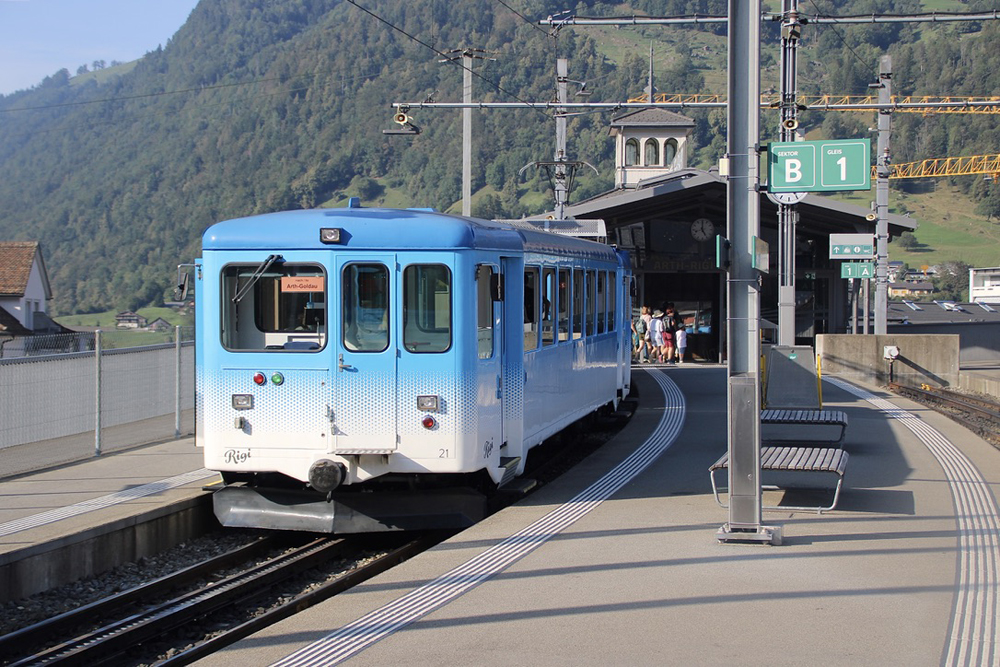
MOUNT RIGI, Switzerland — There are more than two dozen cog railways in Switzerland, according to Wikipedia; you could build an entire trip around seeking out the highest, steepest, narrowest gauge, and various other superlatives.
The Rigi Railways could make that list for a couple of reasons — it’s the oldest rack railway in Europe, dating to 1871, and Europe’s highest standard-gauge line as well, reaching 1,752 meters (or 5,748 feet). But that’s not really what makes it particularly interesting.
No, it’s that there are not one, but two ways up the mountain. Among the country’s great cog rail lines, this is the only one that allows you to go up the mountain one way, and come down another.
Even that is not Rigi’s greatest attraction, by any means. And make no mistake, this is an extremely popular place to visit. For most people, the attraction is that Rigi, while by no means among Switzerland’s tallest mountains, stands more or less by itself, meaning the view from the top is expansive. The 5,897-foot summit is more than 4,200 feet above the surrounding countryside; on a clear day, it is said you can see 24 of the 26 Swiss cantons. It wasn’t quite that clear on either of my visits in September — yes, I visited Rigi twice; more on that shortly — but both trips, visibility was good or excellent, and the view was indeed spectacular.
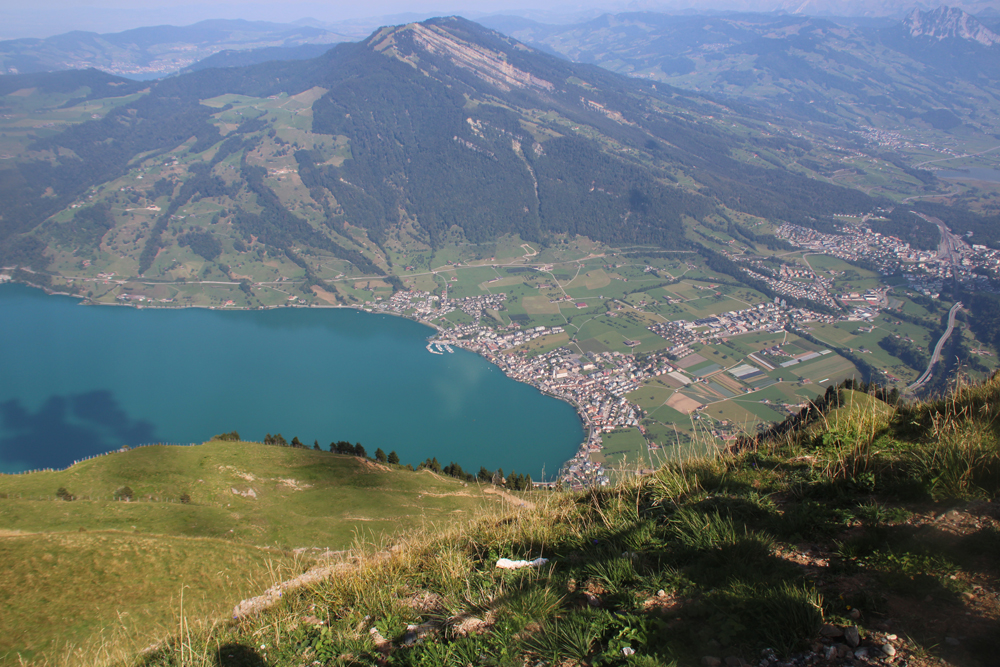
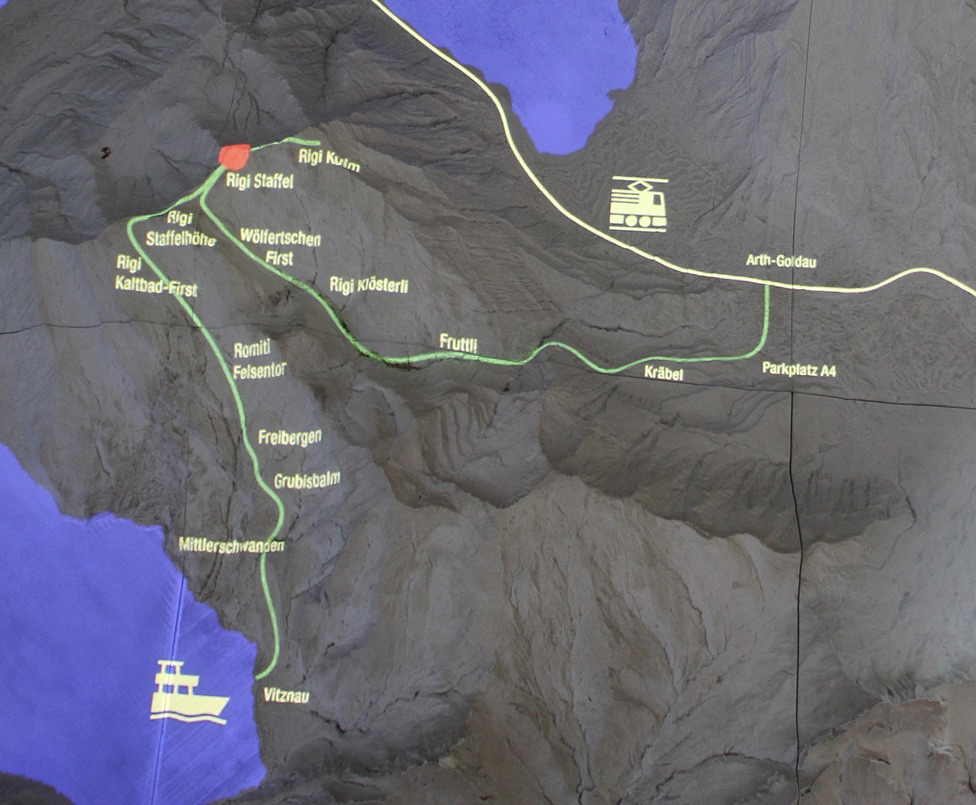
The existence of the two railways reflects the independence of (and often, the competition between) Swiss cantons. Mount Rigi lies in the cantons of Lucerne and Schwyz. Each canton granted its own license to build a cog railway; the line in Lucerne was built first, from the lakeside community of Vitznau, south of the mountain, to Rigi Staffelhöhe, the highest point in Lucerne canton, but not the mountain’s summit, which is in Schwyz. This line opened in 1871. Meanwhile, Schwyz granted permission in 1870 for construction of a line to the summit, Rigi Kulm, from Arth, on the mountain’s east side. This line eventually connected , with the earlier line from Vitznau and continued on to the summit; it was completed in 1873, and once done, trains from Vitznau paid a fee to run the 1.1 miles from the junction to the summit. This continued until 1992, when the two companies merged and became today’s Rigi Railways.
Other details: Maximum grades are 25% on the Vitznau line; 20% on the line to Arth-Goldau (the current station, a connection with Swiss Federal Railways trains). It’s 4.1 miles from the summit to Vitznau, 5.3 to Arth-Goldau.
Having gone up the mountain twice, I can wholehearted say the ride is worthwhile.
The first trip to the top
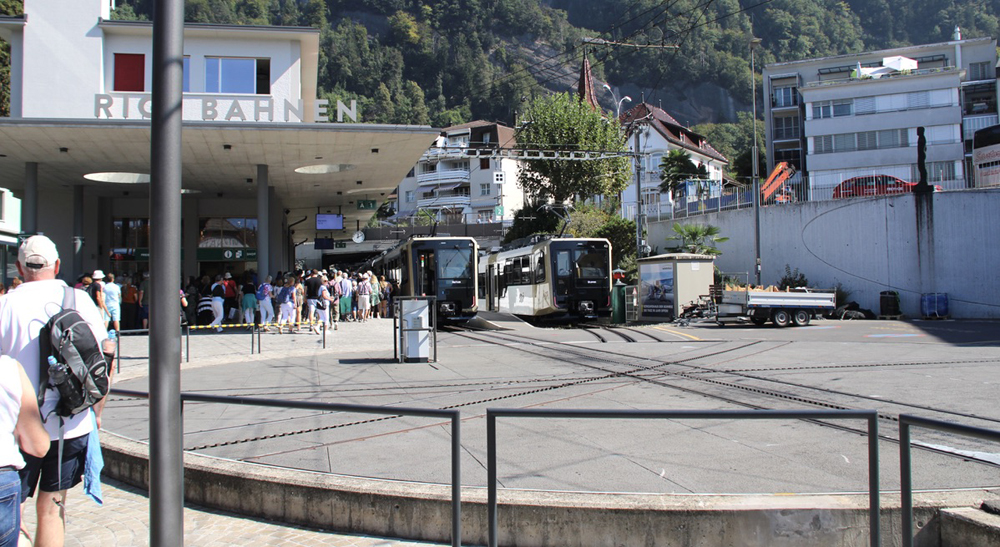
The visits came about because I was part of two tours during a three-week Swiss visit in September 2023. On the first, Switzerland Tourism was kind enough to add me to a tour of travel writers for several days, specifically so I could research another story for the magazine. But our group of six writers, and our Tourism guide, Fabio, convened in Lucerne and, after a tour of the city, boarded a steamship (one of three still in the Lake Lucerne ferry fleet) for the trip from Lucerne to Vitznau. The cog railway train leaves Vitznau just a few minutes after the ferry arrives, and the hard-earned lesson here was that people run from the boat to get a good seat on the train. From the bottom to Rigi Staffel, where we detrained, was only 30 minutes.
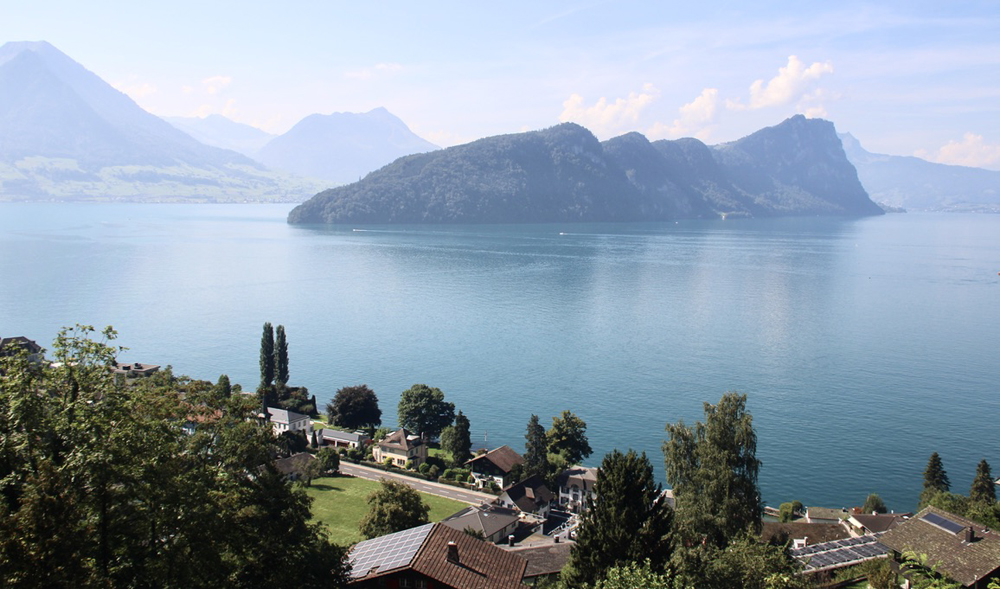
Since the rest of this group was travel writers, rather than rail enthusiasts, I was really the only one who cared about the equipment on this trip. We rode a modern Stadler Bhe 4/6 two-car articulated EMU trainset; there’s a short video here from the equipment’s introduction. The trains entered service in April 2022; news articles indicate they will eventually operate on both the Vitznau and Arth-Goldau lines, but currently are running only on the Vitznau route.
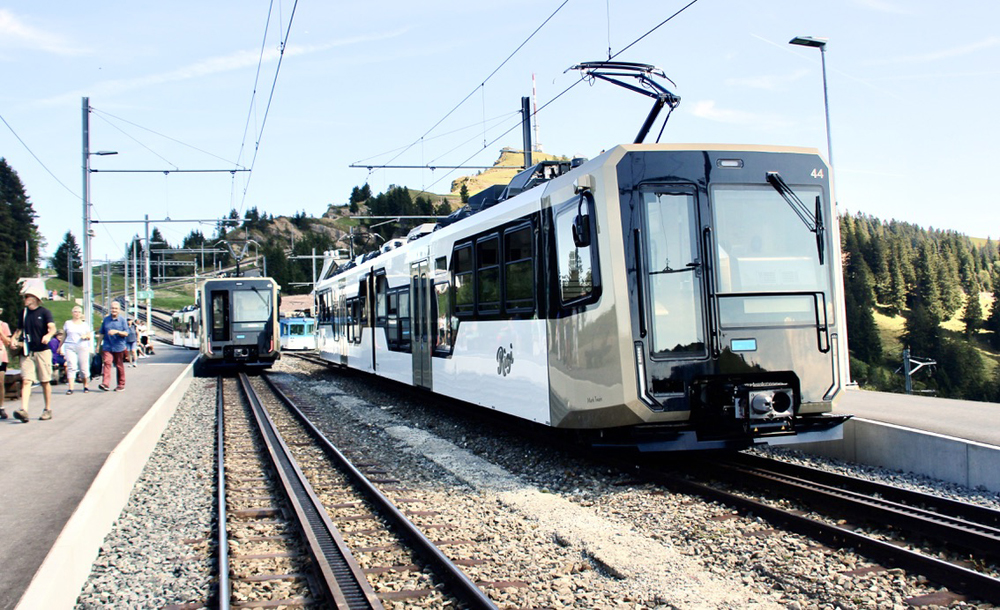
Our group detrained at Rigi Staffel, one stop short of the summit, to have lunch at the Lok 7 Restaurant. The restaurant takes its name from one of the steam locomotives that used to provide power for the cog railway; there’s a display locomotive in front, and a very nice scale model at the bar. The restaurant sits between the two cog lines, so you can watch trains go by on either side of you if you sit on the patio on a nice day. The food was quite good and, by Swiss standards, reasonably priced; there’s a link to an English menu included on this page. Most of our group went with the rosti, a Swiss national dish (spoiler alert: they’re hash browns; the key is what you add to them). Since I’d had rosti the day before in Lucerne, I went with a fish pasta, and was happy with the choice.
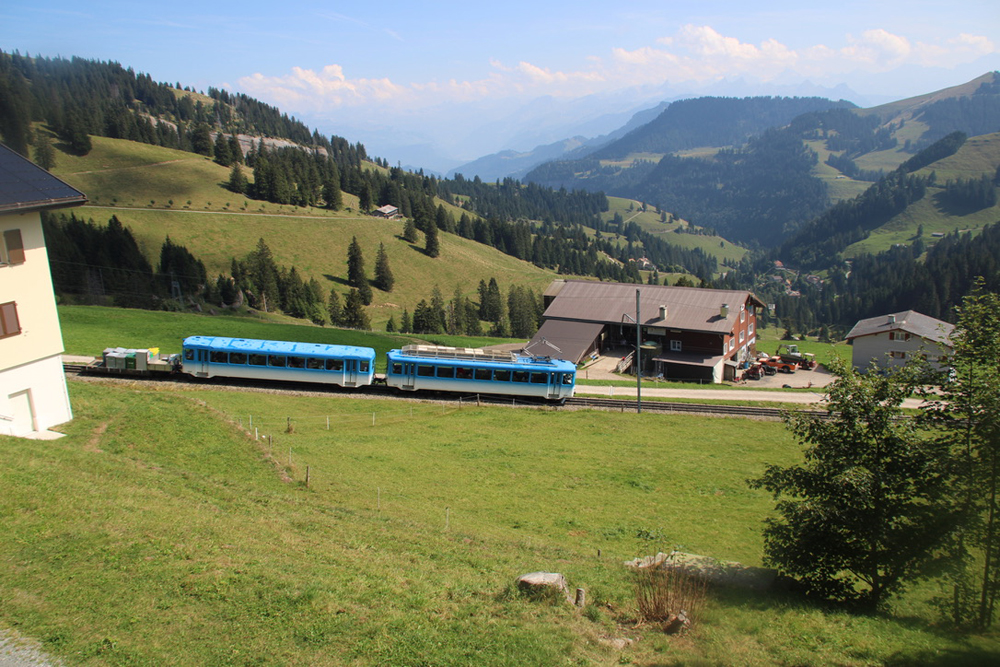
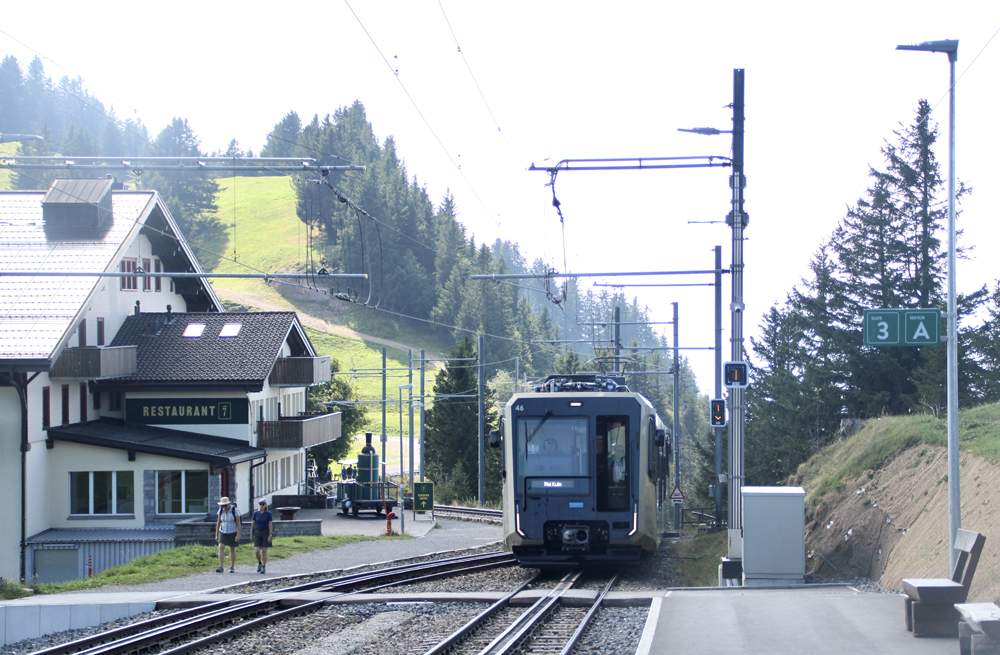
After that, it was back on the train to the top of the summit. Not much to say here except, well, there’s a reason people come up here. The views are great, as you can see above and below.
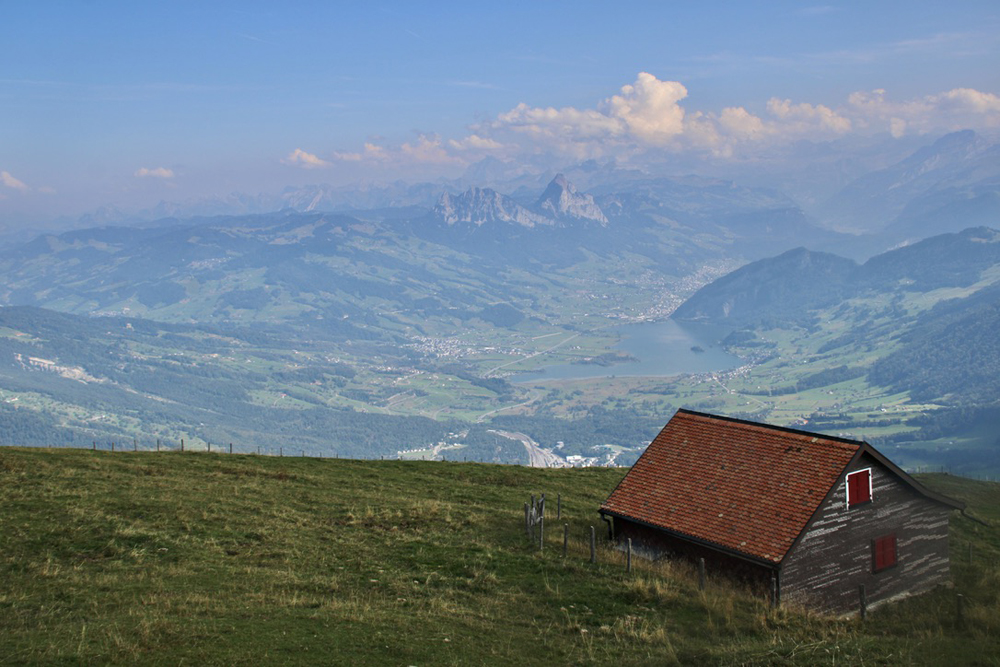
On a clear day like this, you could see the Swiss National Railways main line that runs through Arth-Goldau quite well, which provided its own photo opportunities.
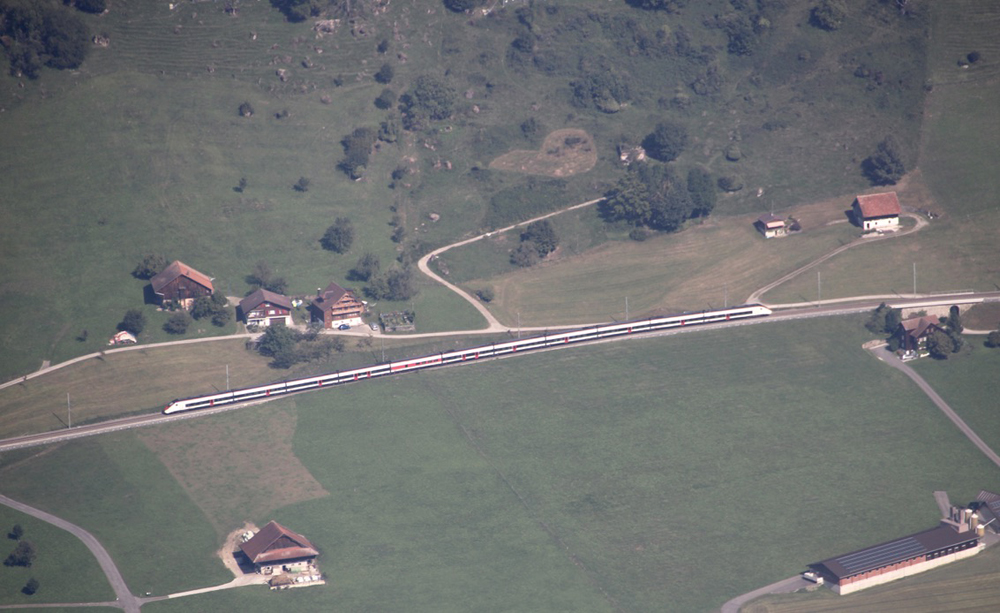
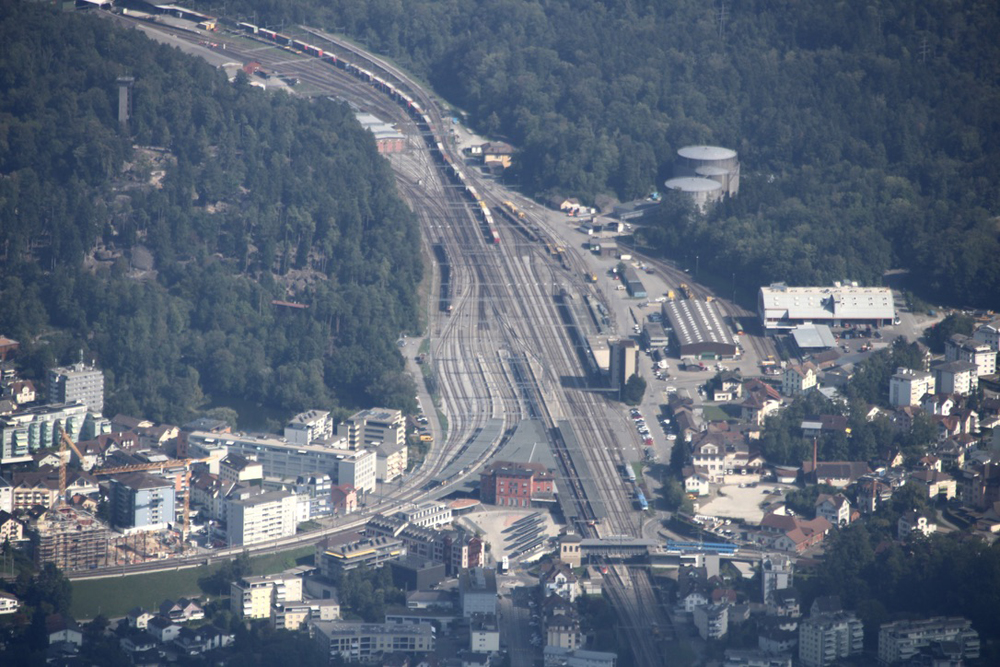
On our return trip, we took the other route, which runs to the Arth-Goldau train station, then caught an SBB train back to Lucerne. The ride down the mountain was fun because we were following another train at fairly close quarters, making for some interesting photos. This ride was on the older equipment that is standard on the Arth-Goldau line; these includes trainsets between 1949 and 1982 by SLM (Schweizerische Lokomotiv und Maschinenfabrik), a Stadler predecessor.
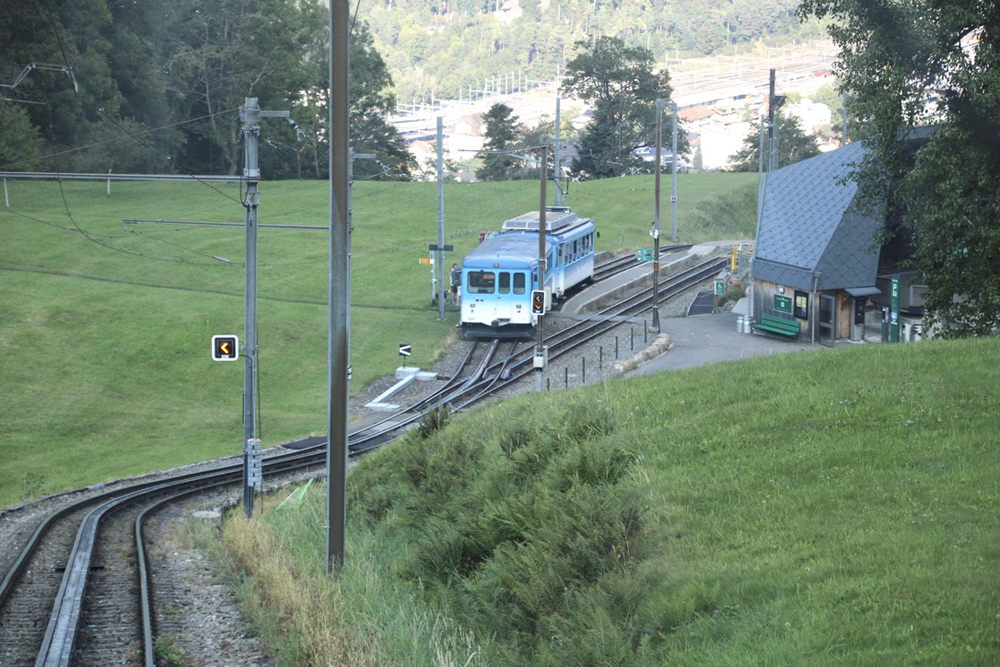
The second trip
My second visit to Rigi came at the end of my Swiss stay, and the end of our Trains/Special Interest Tours “Majestic Switzerland” tour. Again, we took the steamship from Lucerne to Vitznau; again, that led to an absolutely packed train up the mountain that left immediately. (If I were planning this trip on my own, I might try a ferry ride other than the midday steamship to see if that led to a smaller crowd).
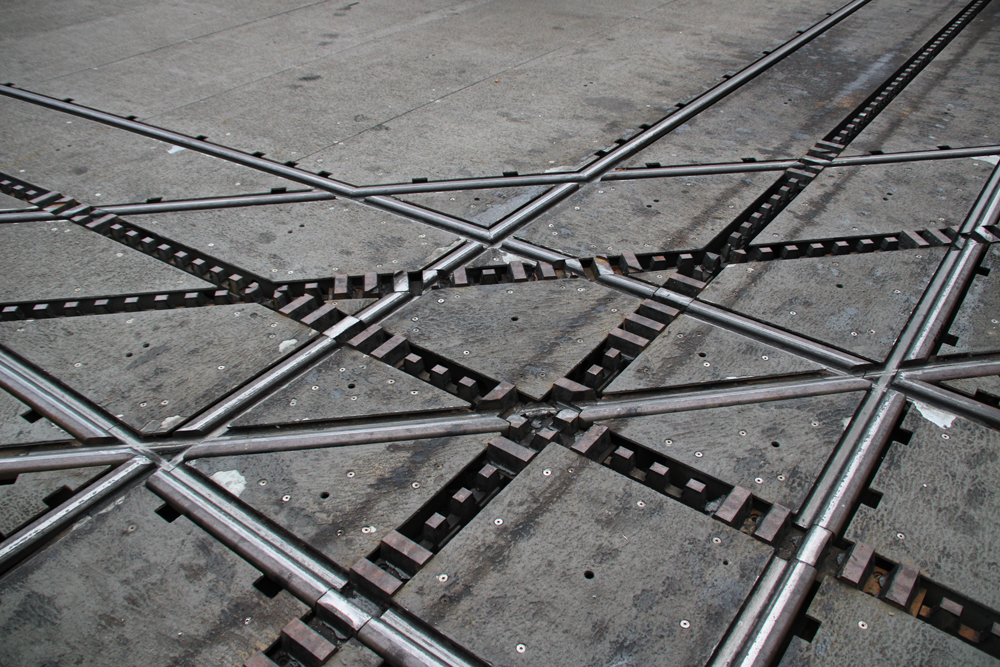
However, we avoided that crowd because our tour group stayed behind to take a tour of the railways’ Vitznau shops, which are a modern, glass-sided building right along the lakefront and feature the most unusual turntable you will ever see — a multitrack affair with some curving tracks; essentially, it fills the role a group of switches would handle in a less constrained space. The tour was one of those bonus activities you get with the Majestic Switzerland Tour, and it was absolutely worthwhile. This gave us a chance to see quite a few behind-the-scenes features, ranging from sections of the cog track (not surprisingly, extremely sturdy and heavy) to restored steam locomotives and wooden coaches — some of which date to the 1873 opening — still used on occasion. And, as it turned out, our group had been booked for a ride up the mountain in some of the vintage equipment — not as comfortable as the new equipment, but probably more suitable for our rail-oriented crowd. (We’re offering the tour again in 2024, and I’m planning to go again: information is available here.)
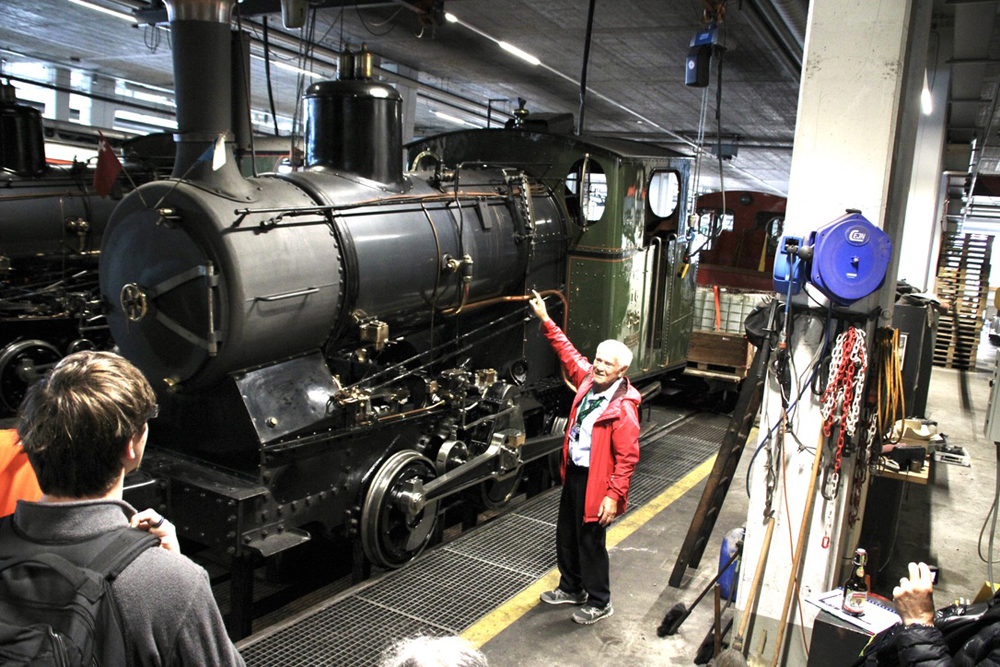
It was colder and not quite as clear on this trip (sunny, but with some clouds as well), and, since it was Sunday, the top of the mountain, and its dining facilities, were outrageously crowded. (Every single person in Switzerland hikes on Sunday; I believe it is required by statute.) If you do this on your own, a weekday is definitely a better idea, but when you’re doing a group tour, something has to be on the weekends.
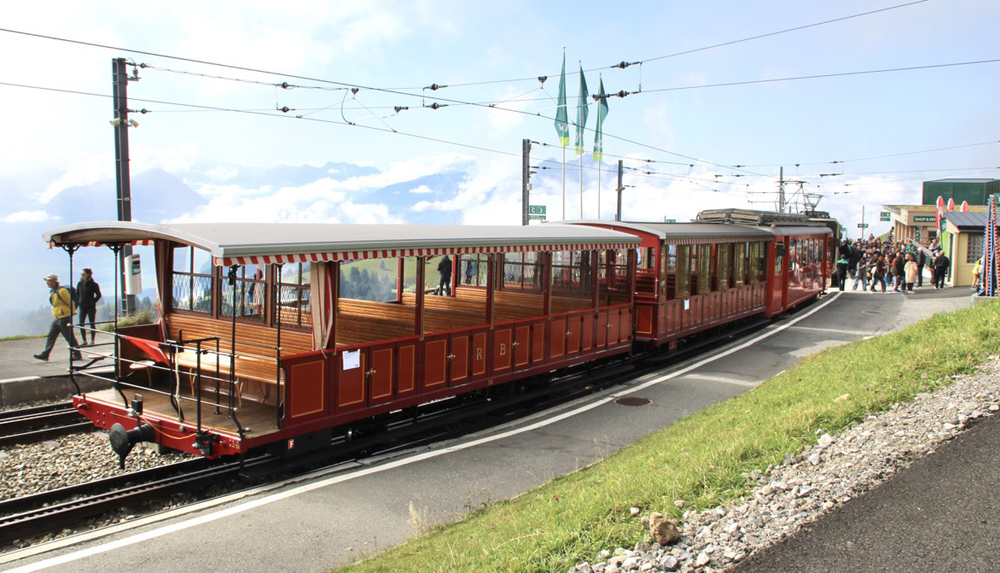
The big surprise, when we reached the top, was the presence of Lok 7: not the restaurant, but the locomotive for which it is named — an operational, upright-boiler steam locomotive from 1873 that can manage a blistering top speed of 7.5 kilometers per hour (or 4.66 mph). By total accident, we had arrived on one of the rare days when it is brought out for a run.
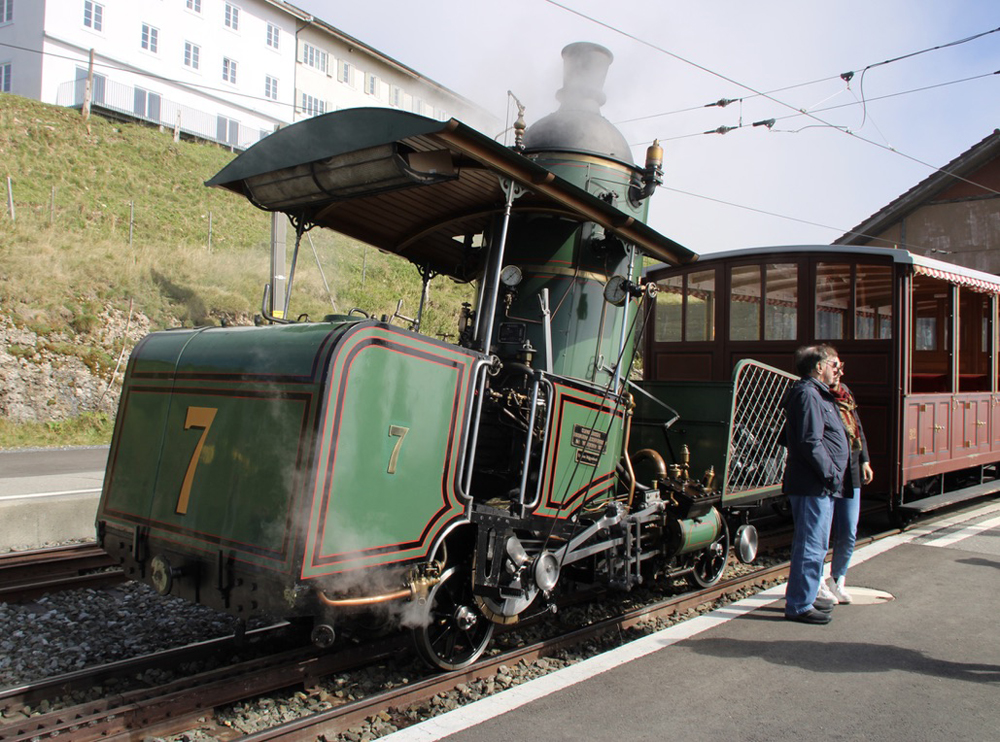
One of the more adventurous members of our group managed to talk his way onto the excursion back down the hill. (We were more than happy to let him do this, once he let us know of his plans; we were confident he could catch up to us in Zurich that night, given the regularity of Swiss rail service.) He would later tell us that he was even invited into the cab — or what passes for a cab on that primitive steamer — for part of the trip. The rest of us once again went back down the mountain via Arth-Goldau, and from there onto Zurich, where we concluded our 11-night tour.
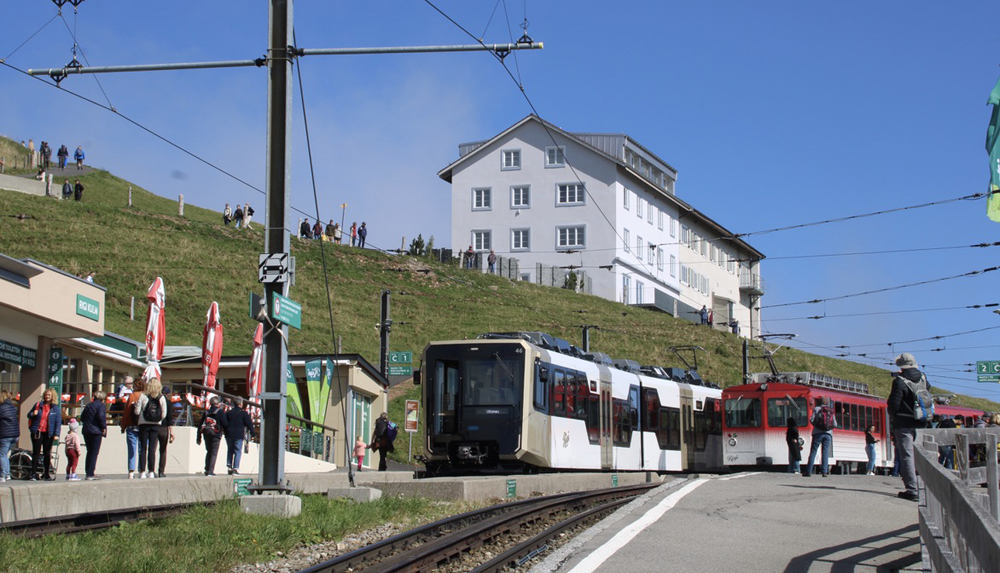
The Trains group took part in several cog railway trips during the tour, and the weather was hit-and-miss for some of them. This was one of the better days. And for me, as a two-time visitor, there was just enough difference between the two trips that they didn’t feel repetitive; there was enough to see, and to learn about the Rigi operation, that I had no problem doing it twice and won’t hesitate to go again in the future.
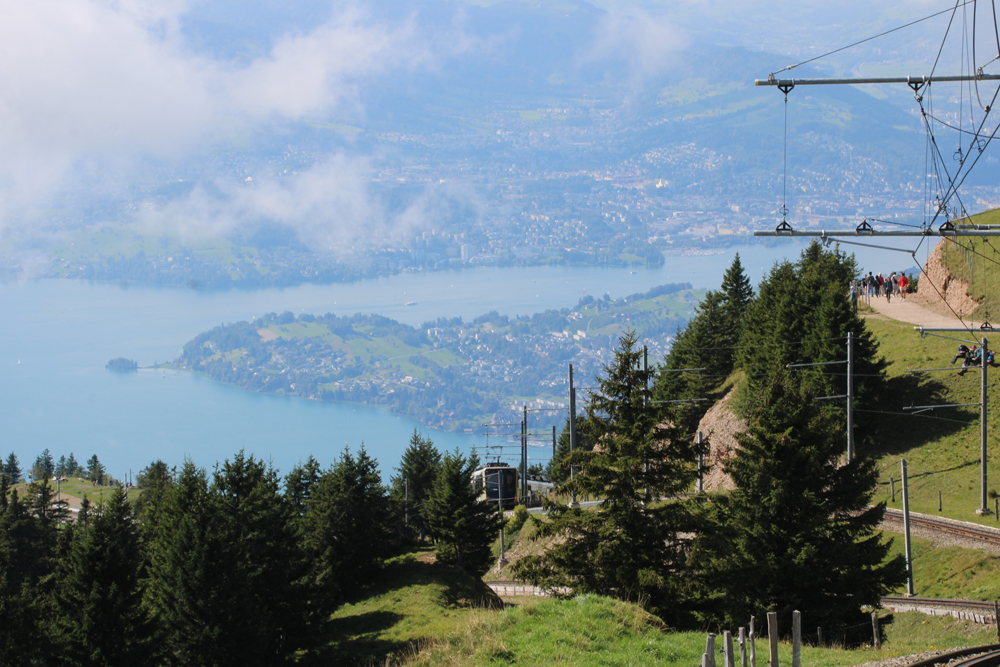






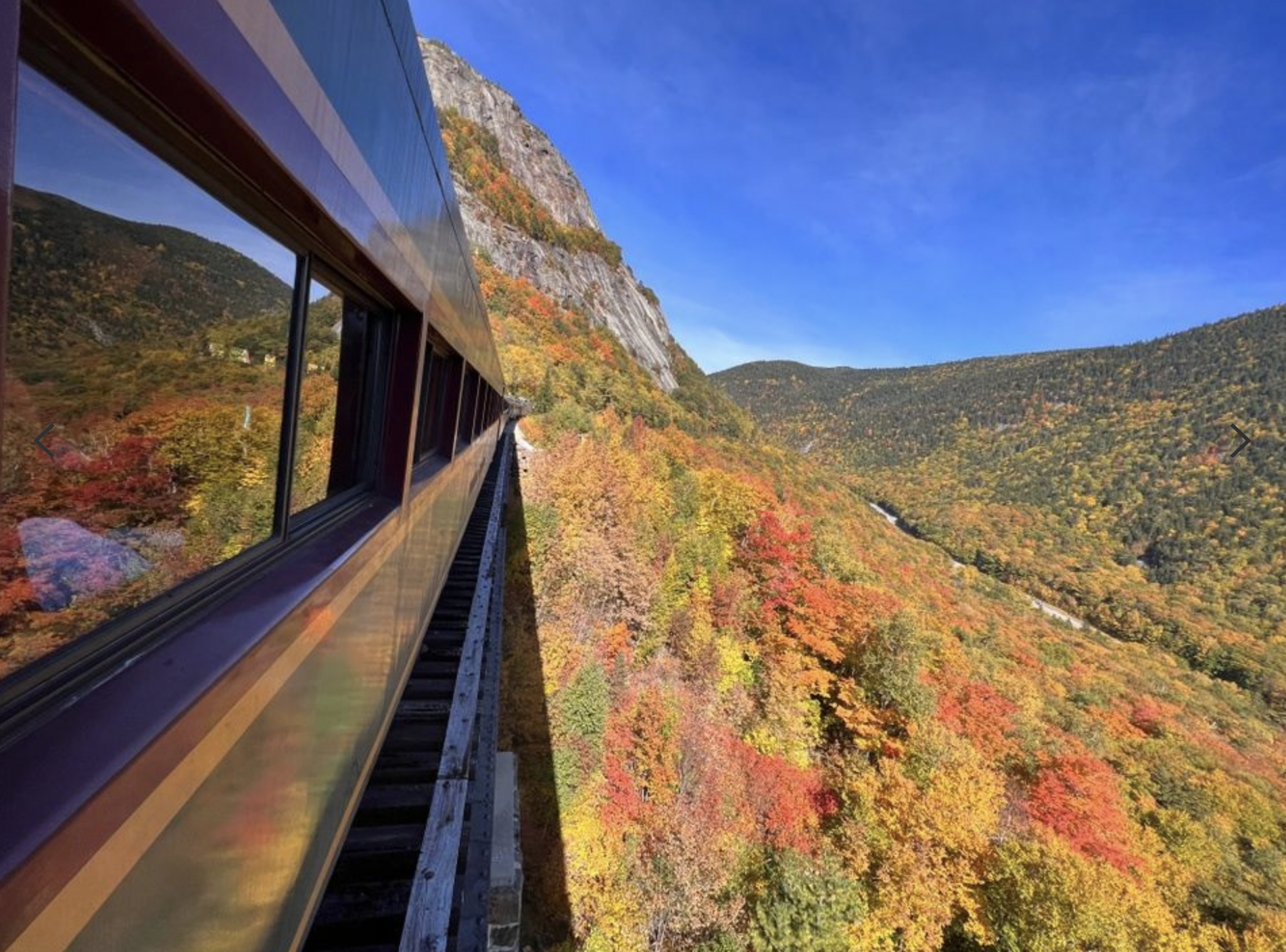
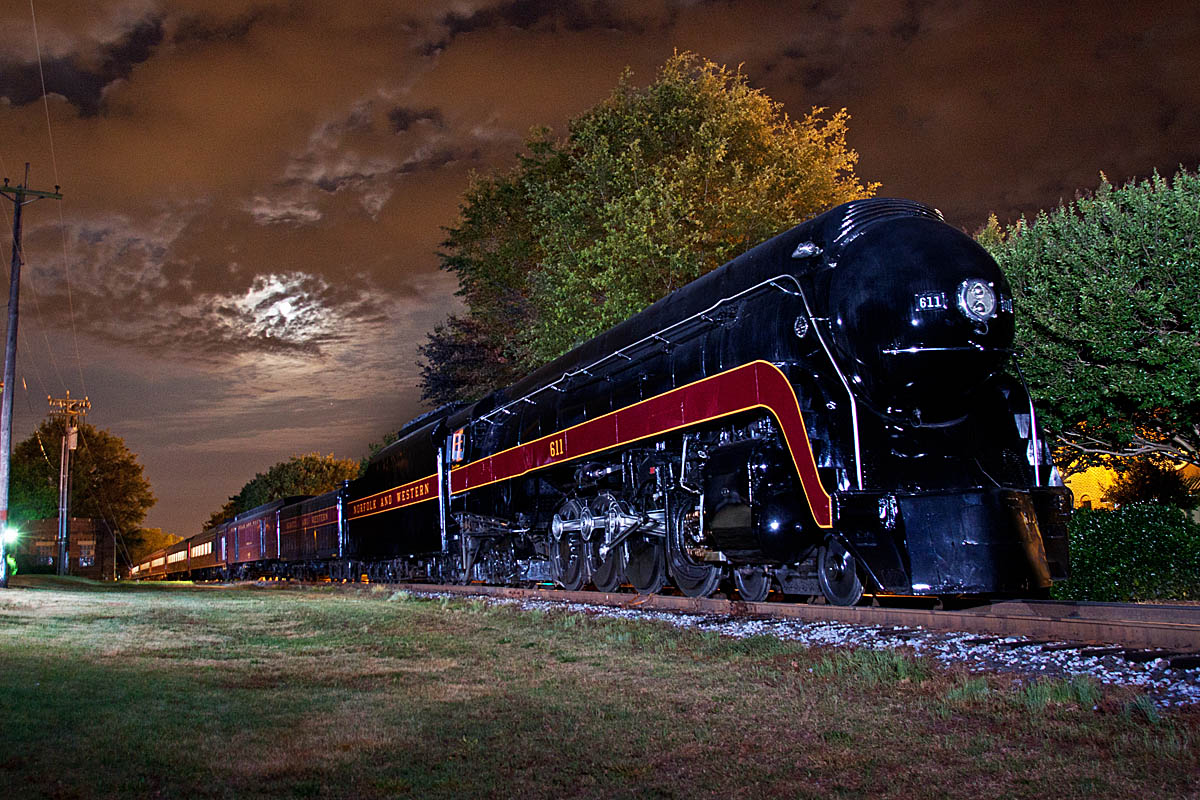
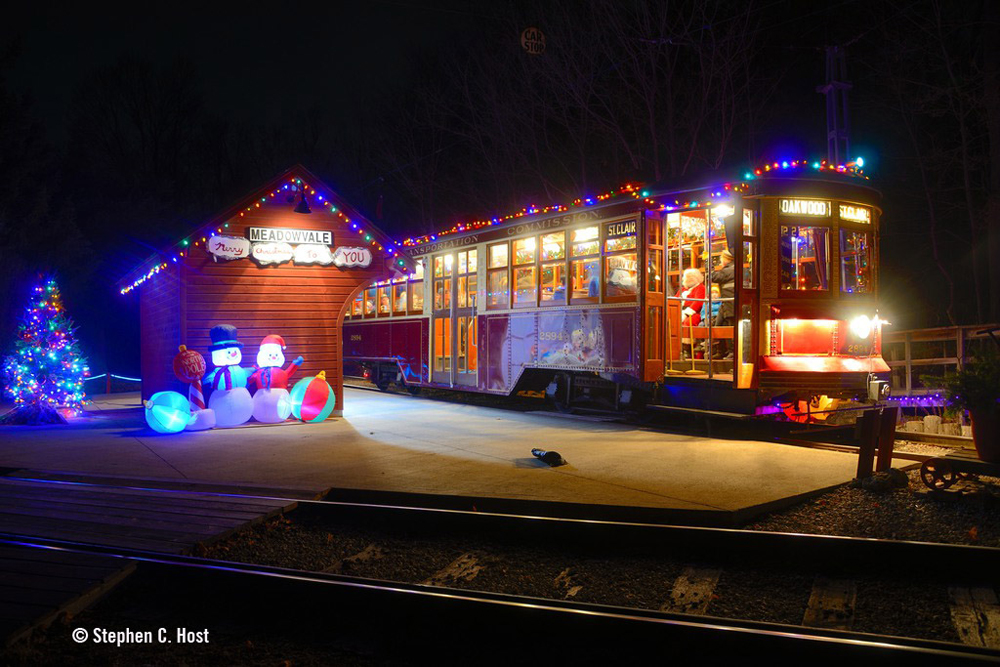
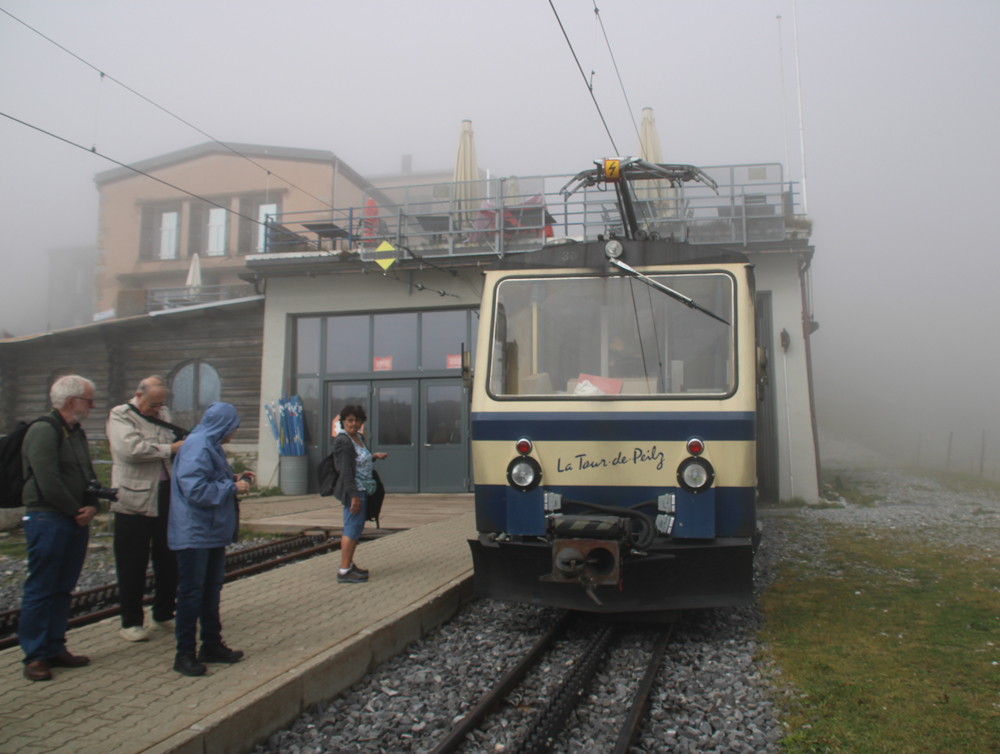




Thank you David for posting this. Looking forward to future stories you mentioned and other online surprises. Thank you also for your earlier amazing piece on the New Gottard Pass Base Tunnel in 2023 or 2022.
A Swiss rail trip was my first trip to Europe, in 1989 or 91. The trains were amazing back then and maybe more so as there was more variety in equipment. Wish I could join the Train’s Special Interest Tour and revisit all these great sites and railways– especially the Furka Pass Steam railway– as it had not been restored when I was there. Unfortunately, I learned on another SIT Train’s tour I get high altitude sickness and would not want to ruin any part of the trip for others let alone myself.
Luckily one of the participants on the tour David talked about gave our NRHS chapter a virtual presentation of a video program he created. It was amazing! and almost like being there for bits and pieces of train travel
Thank you for the in depth look at and recommendations for my upcoming trip to Mount Rigi and a lot more in Switzerland this coming May. On a previous visit to that country, I had rented a car. BIG MISTAKE. Unlike Amtrak, the trains run on time, are clean and are frequent. And the routes go everywhere. Can’t wait fro 10 whole days not behind a steering wheel.
John, I also have an article coming up in the March issue of the magazine on visiting Gotthard Pass. You’ll want to watch for that. There will be another later on MOB, the company that runs the gauge-changing train between Interlocken and Montreux, but that one may not be out soon enough to be much help for a May trip. And yes, there is no reason to rent a car in Switzerland. On my trip this year, I had to go to a laundromat when I arrived in Zurich; while I was still on the train into town, I was able to find locations using Google, then use the Swiss National Railways app to figure out exactly which Zurich tram line would take me to the closest laundromat, where to board outside the train station, and which stop to get off. — David Lassen
Rail is the ONLY way to travel in Europe. Make at least run in Switzerland so you can set your watch! ?